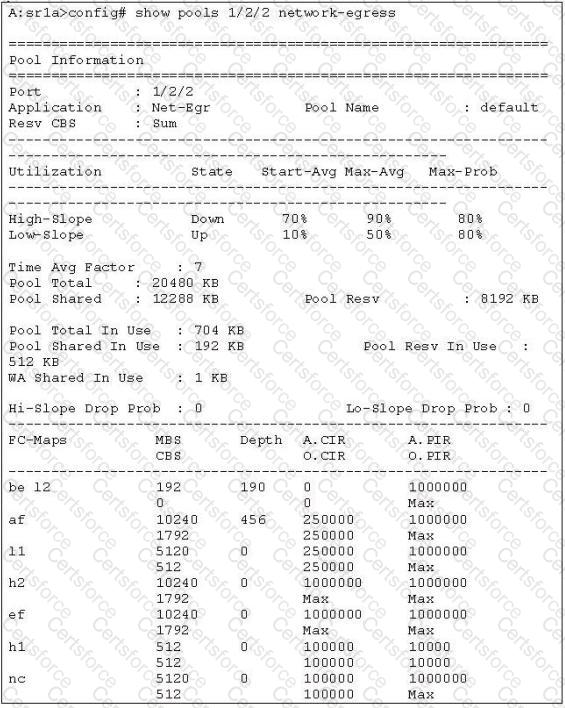Which of the following statements regarding the default scheduler in the Nokia 7750 SR are TRUE? (Choose two)
If packets egressing a SAP do not match any criteria defined in the SAP-egress policy, which forwarding class will these packets be assigned to?
Which of the following fields is in the MPLS header?
When using an egress port scheduler, on which scheduling loop are orphaned queues serviced?
Which of the following statements describe the operation of WRED on the Nokia 7750 SR? (Choose three)
Which of the following statements about queue modes, and profile marking of packets when leaving a queue is FALSE?
Click the exhibit button below. Given the output of the #show pools 1/2/2 network-egress command on a GigE port, what can the service provider deduce? (Choose two)

If two queues complete for bandwidth in a hierarchical scheduler environment, which parameter is used by their parent scheduler to determine the priority with which each queue can use bandwidth above its committed rate?
Which following statements about the four-step QoS process (classification, queuing, scheduling, and marking/remarking) executed for every packet entering a Nokia 7750 SR is TRUE?
Which of the following criteria is NOT used in the behavior aggregate classification option?